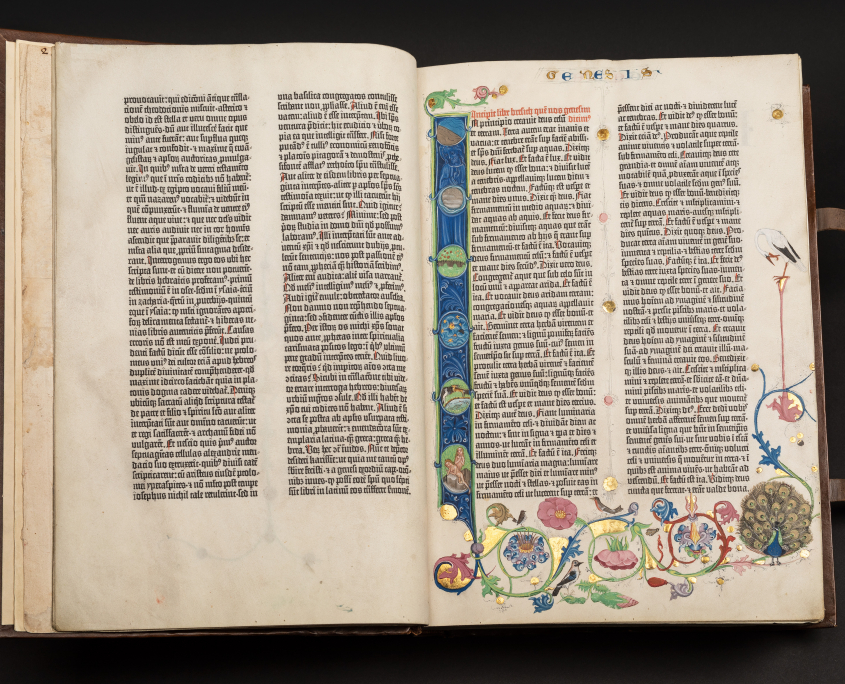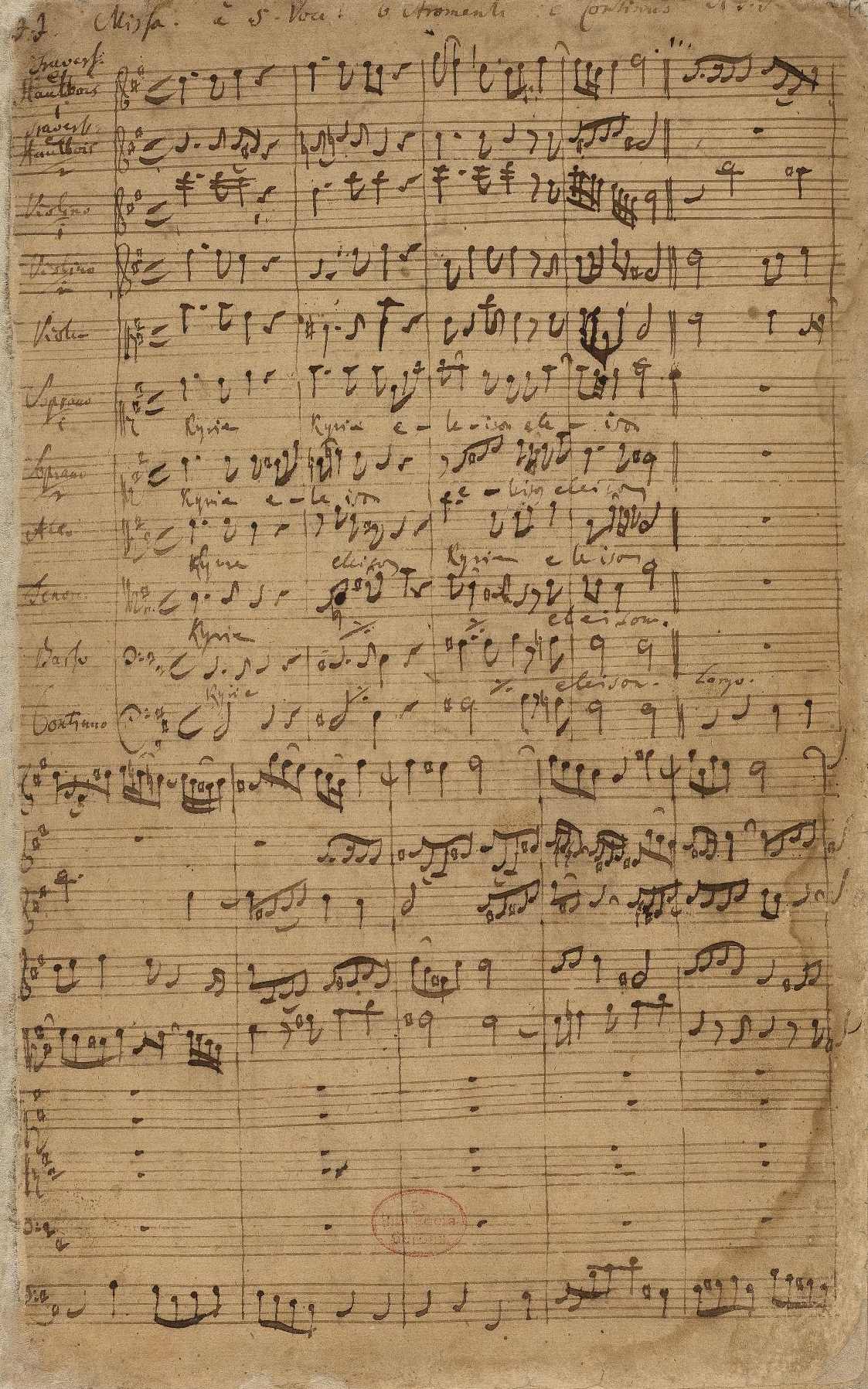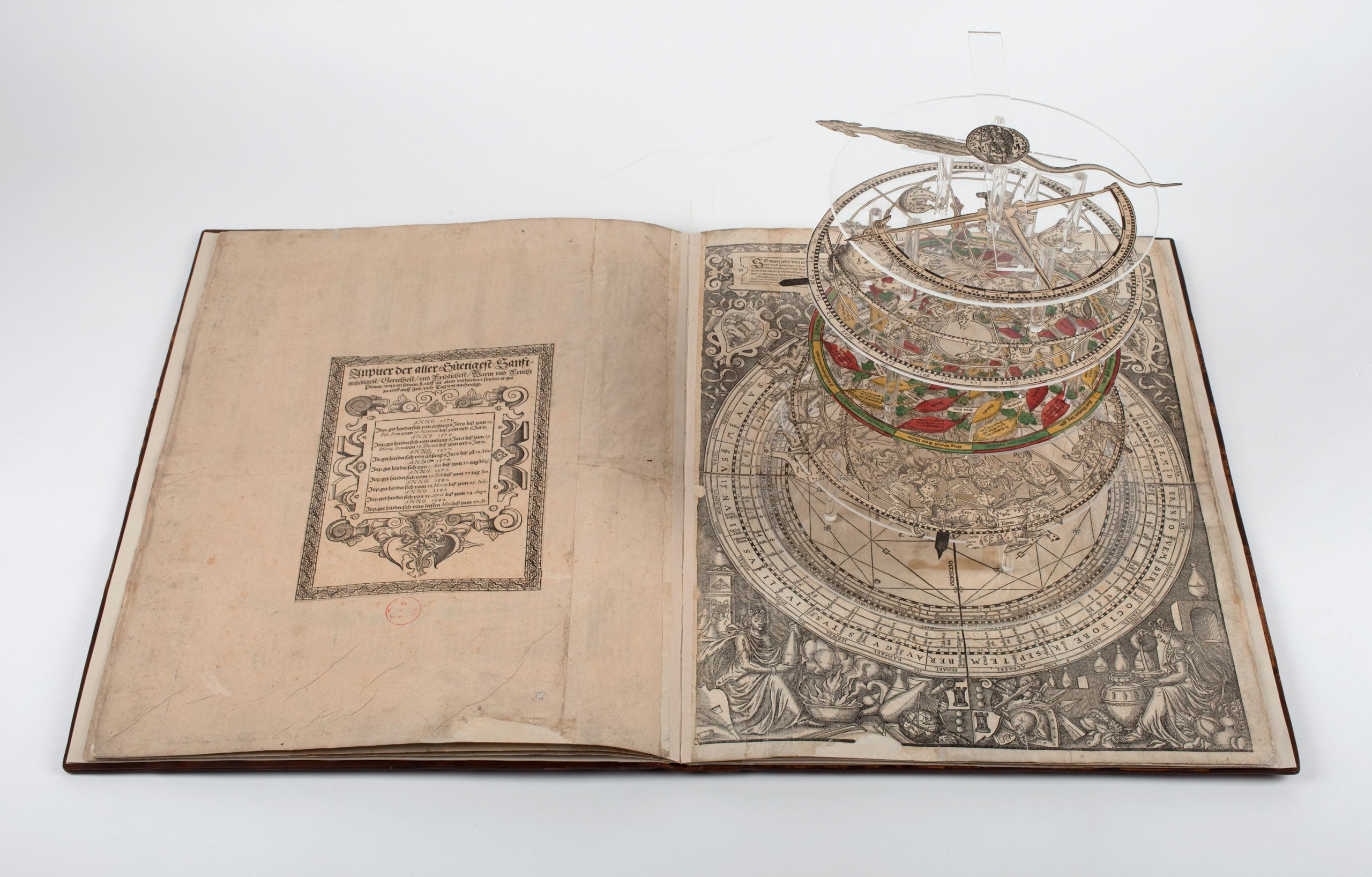24
Changing displays in the treasure chamber
Rare items from
the library’s collections
The treasure chamber is located underground beneath the museum’s permanent exhibition and can be accessed via the staircase or via a lift for wheelchair users. The most exquisite items of the library’s collections are on display here. As part of the museum’s discerning efforts to preserve their objects appropriately, the precious and fragile exhibits are changed on a regular basis. This concept of preservation is especially strict in the treasure chamber: all objects have to be completely replaced with others every three months.
As a result, four different exhibitions can be viewed in the treasure chamber every year. Those who visit the museum more than once may enjoy new and remarkable objects on each occasion.
At the opening of the exhibition there will be 26 objects on display, such as the Kyrie from the Mass in B Minor by Johann Sebastian Bach and an astrolabe, a scientific instrument for astronomical calculations made in Berlin in the 16th century.
Kyrie from the Mass in B Minor
by Johann Sebastian Bach
Archidoxa by Leonhardt Thurneysser zum Thurn
The Thomaskantor in Leipzig, Johann Sebastian Bach, composed a Kyrie and Gloria mass around 1733 and sent the corresponding voice material of this mass to the court in Dresden. By sending his music to Friedrich August II, heir to the Elector of Saxony August der Starke, Bach hoped to gain an honorary title to strengthen his position in Leipzig.
The autograph score remained in the possession of the composer. After his death, his son Carl Philipp Emanuel Bach inherited it.
Johann Sebastian Bach: Mass in B Minor, Kyrie, first page, autograph score, Leipzig, 1733. digital copy
Leonardt Thurneysser zum Thurn: Archidoxa, astrolabe, Berlin, 1575. SBB-PK / Office for photography and images. CC BY-NC-SA 4.0 digital copy
An exceptional legacy from the history of printing in Berlin is the Archidoxa by Leonardt Thurneysser. It is one of his most well-known works, a compilation of astrological ideas and predictions including an instrument called an astrolabe. The purpose of this astrolabe was to create individual horoscopes and prophecies without having to do tedious calculations. On each plate there are up to six rotating discs which, among other things, depict the fixed stars with figures for every star sign as well as a spiral shaped ‘Tree of Life’ with varying prophecies.




